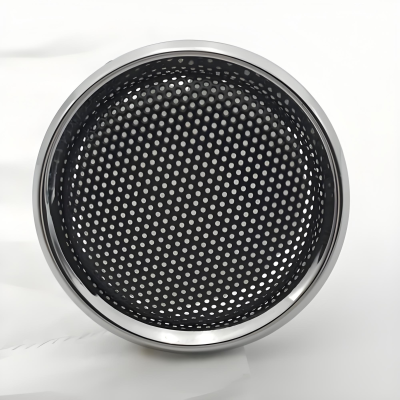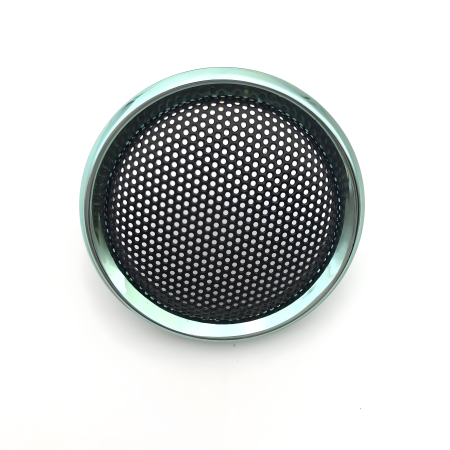The metal mesh of speakers is usually manufactured by stamping. This is because the stamping process has the advantages of high efficiency and precision, and is very suitable for large-scale production of thin and high-precision parts such as metal mesh.
The metal mesh of speakers is generally produced by stamping, which includes material selection, stamping forming, surface treatment and other links. Stamping can not only efficiently and accurately produce meshes with uniform holes and uniform shapes, but also improve their durability and aesthetics through post-processing, ensuring that the mesh can not only meet the function of protecting the speaker unit, but also will not affect the transmission of sound quality.


Today, as the audio industry pays more and more attention to product quality and consumer experience, the manufacturing process of speaker metal mesh has ushered in a major breakthrough. As an important part of the speaker, the metal mesh not only protects the speaker unit and blocks external debris, but also has a direct impact on the propagation of sound.
The production process of speaker metal mesh has always been one of the key factors affecting sound quality and durability. The new generation of metal mesh adopts precision stamping technology, and the entire manufacturing process is completed by high-precision molds to ensure that the aperture, spacing and arrangement of the mesh surface are highly consistent. Compared with traditional manual production and low-precision stamping, precision stamping not only improves production efficiency, but also greatly reduces hole position deviation, ensures good sound propagation and reduces noise.
The optimization of the stamping process allows the metal mesh to protect the speaker unit while greatly improving the clarity and purity of the sound quality. Because the aperture design and arrangement of the metal mesh are more refined, the air flow is smoother, and the sound of the speaker can be transmitted to the outside world more clearly and naturally, enhancing the shock of the low frequency and the thoroughness of the high frequency.
Not only that, the durability and protection performance of the metal mesh have also been significantly improved. The new process uses high-strength and corrosion-resistant materials such as stainless steel and aluminum alloy. After surface treatment such as chrome plating and anodizing, the metal mesh has significantly improved its anti-oxidation, anti-corrosion and anti-friction properties, so that it can maintain a long service life in various environments. Especially in humid and dusty environments, the speaker metal mesh can still effectively prevent debris from entering the speaker unit, extending the service life of the speaker, while ensuring the stability and damage resistance of the product.
In addition, with the improvement of environmental awareness, the design of metal mesh also tends to be lightweight and environmentally friendly. The new generation of speaker metal grilles adopts a thin design, which reduces the overall weight of the product while ensuring strength and durability, and improves the convenience and mobility of the audio system. More importantly, the production process greatly reduces material waste, adopts green manufacturing technology, and complies with environmental regulations. This innovative process not only saves energy and reduces consumption, but also reduces waste generation, helping the audio industry achieve sustainable development.

